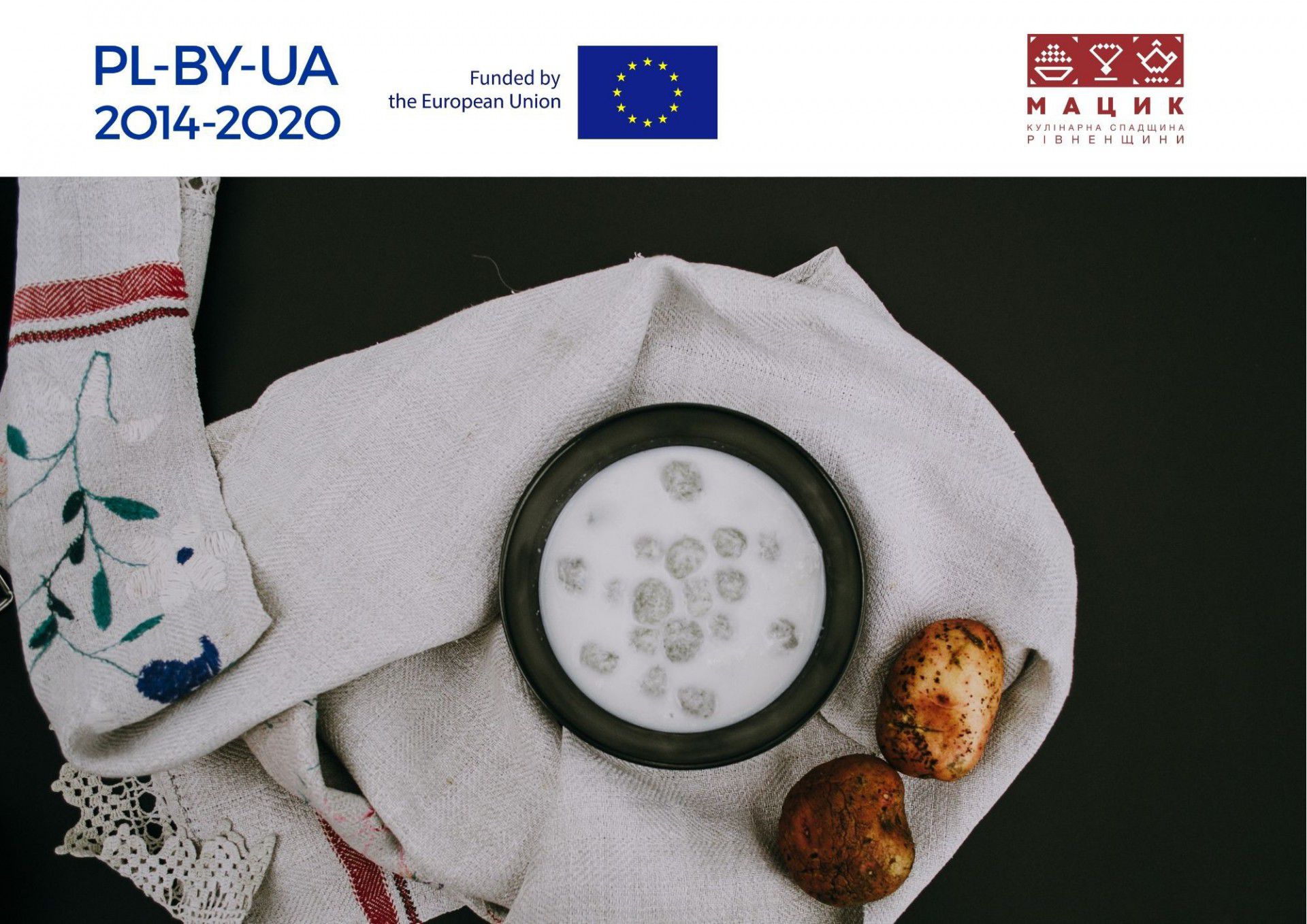Intangible cultural heritage of Rivne region: the tradition of matsyk preparing and the rite of "leading the kust"
On the map of Ukraine, in addition to architectural and natural monuments, the city of Rivne and the Rivne region have their own inherent authentic features and cultural traditions. Rituals and customs, dialects and folklore, culinary heritage, traditional crafts and industry are well-preserved locally. We don’t want to lose it. So it’s crucial to popularize and integrate them into modern life, they have a powerful potential for tourism development.
We continue a series of publications about the culinary expeditions of the NGO "Agency for Sustainable Development of the City", which promote the culinary heritage of Rivne and Rivne region. In the article, we have preserved the dialect of the region and live language.

The tradition of preparing matsyk, the rite of "vodinnya kusta", wild beekeeping, the rite of veneration of millennial trees, haze weaving - all these were researched by the NGO "Agency for Sustainable Development of the city" at expedition from the villages of Dubrovytsia and Rokitniv districts.
.png)
"Why to keep a boar if you don't cram the matsyk"
We visited the village of Svarytsevychi, Dubrovytsia district - the capital of matsyk-making traditions - to Mrs Valentina, for whom matsyk preparing is a family tradition and business for 25 years. The cooking secrets were passed from, generation to generation. Once every housewife in the village made matsyk, and now it is a rarity. Mrs. Valentina said:
- Svaritsevytsia matsyk are made in winter. But now I have heard that matsyk can be prepared all year round, but we don't.
We make it natural. We kill a wild boar on Christmas carols and cram it in the winter altogether. Then we put matsyk in the attic because there is wind. It is necessary for the matsyk to freeze - then it dries itself. After 6-8 months, one matsyk dries in a half.
More detailed information and matsyk recipe can be found in the culinary catalogue.

It was called "Matsyk" because the housewife often visited the attic and "matsala"(touch) the meat, felt it or dried it. In this way, the storage of food in the old days was used so that it would not spoil. And when the haymaking started, the housewives removed the matsyk from the attic and gave it to the men for mowing. Boguk, Kavruk, Karukh, Ivanko, Matsyok are all regional ancient names of matsyk.

Today, Polissya matsyk is a delicacy that can already be found in stores in Rivne region, thanks to the activation of local manufacturers. And Matsyk is like the best souvenir from Rivne region.
The rite of "leading kusta in Rivne region is included in the National list of elements of the intangible cultural heritage of Ukraine. And the village of Svarytsevychi, Dubrovytsia district, is the only village in Ukraine where the rite was preserved and remained almost unchanged.

Every year, during the Feast of the Trinity in Svarytsevychi, groups of girls "lead the kust" - a young girl who is richly decorated from head to toe with branches, grass and flowers. They "led" her from house to house, singing kust songs and greetings. Then the green dress of the "bush"(kust) was ripped and thrown on rye, or wreaths were woven from it and hung on the figure (roadside cross).
The more "bushes" in the yard, the better the harvest will be for the owners. The old women went to the church and then to the cemetery, bringing lepekha (plant) to the graves. They cried, praying for the dead, and shared with them what had happened to their families during the year. In the afternoon they went to visit guests.
.png)
And for a long time in Polissya many porridges are consumed, the most popular of which are buckwheat and millet. They are cooked steep to milk, cracklings, roasts, as well as liquid - kulish, krupnik.
Kulish in Polissya is the main dish in the family. Each village has its own recipes that are passed down from generation to generation.
Traditionally, porridge is made from millet in a pot (banyanka), which is well washed beforehand. The most delicious kulish on a , with greens, pork ribs and mushrooms. And most importantly - kulish must "grind" the afternoon in the furnace. The kids' favourite kulish is sweet millet porridge with milk and honey.
In the expedition we managed to taste matsyk, kulish and hear the traditional Kust songs in Chudynovychi. One of the members of the ensemble, Mrs Vera, told an authentic recipe for potato galushky with milk, which is also cooked in Polissya and in her family since ancient times:
- It was such an everyday dish, hearty and good for children. My mother boiled a whole big pot in the furnace and we ate those galushky and soup all day long.
More detailed recipe can be found in the electronic version of the culinary catalogue Enjoy the Rivne cuisine: Authentic Dishes and Drinks.

Today the world is open, and it is becoming increasingly difficult to interest tourists. Tourists want to get new emotions, tastes and impressions, especially more and more emphasis is placed on something unknown, ancient, authentic. So let's find and preserve regional traditions together and tell the world about them.
The project is implemented with the financial support of the European Union under the Сross-border cooperation program "Poland-Belarus-Ukraine 2014-2020".
The content is the sole responsibility of the NGO "Agency for Sustainable Development of the City", and under no circumstances can be regarded as reflecting the position of the European Union.
Photographer Anton Trofimchuk
